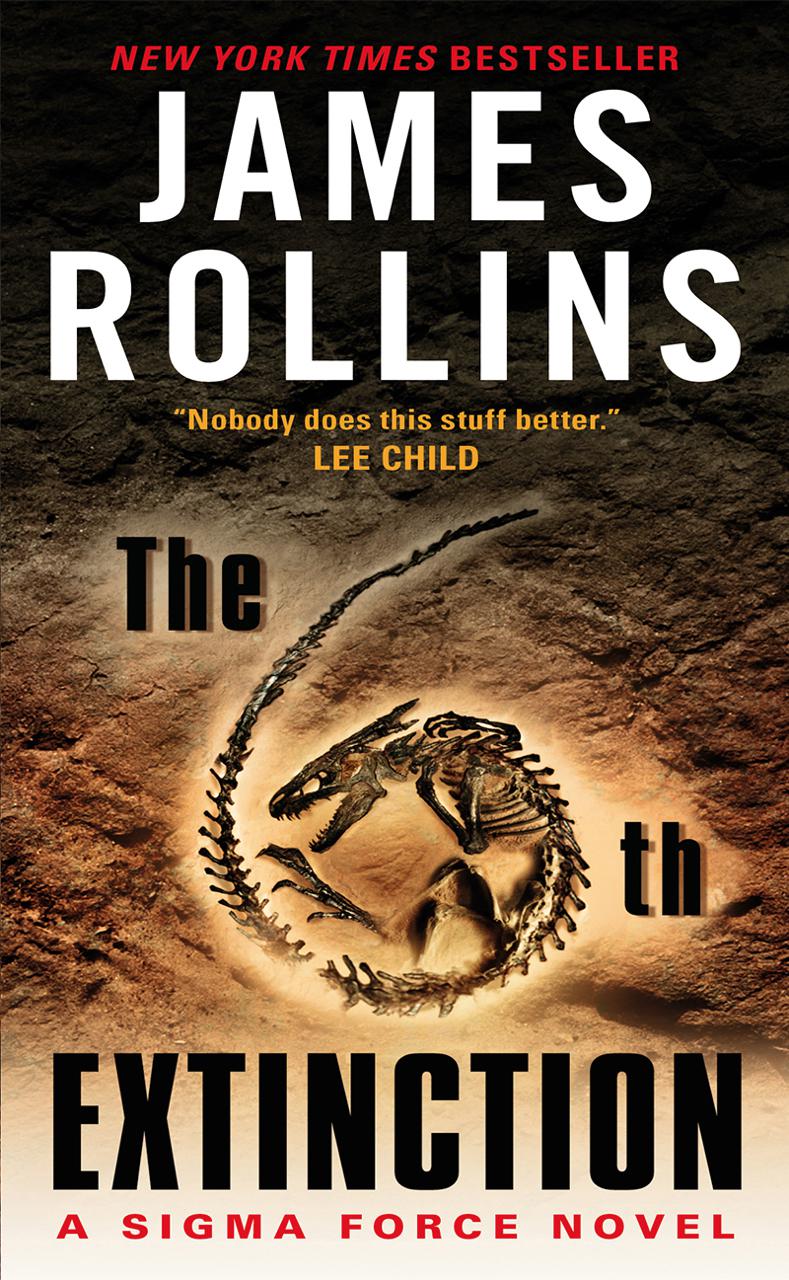
A remote military research station sends out a frantic distress call, ending with a chilling final command: Kill us all! Personnel from the neighboring base rush in to discover everyone already dead-and not just the scientists, but every living thing for fifty square miles is annihilated: every animal, plant, and insect, even bacteria.
The land is entirely sterile-and the blight is spreading.
To halt the inevitable, Commander Gray Pierce and Sigma must unravel a threat that rises out of the distant past, to a time when Antarctica was green and all life on Earth balanced upon the blade of a knife. Following clues from an ancient map rescued from the lost Library of Alexandria, Sigma will discover the truth about an ancient continent, about a new form of death buried under miles of ice.
From millennia-old secrets out of the frozen past to mysteries buried deep in the darkest jungles of today, Sigma will face its greatest challenge to date: stopping the coming extinction of mankind.
But is it already too late?
NOTE: The purchase of an eBook reader is not required to read books. For more information, click here.
FAQ
-
Q. Among the conservationists, I’ve heard the term “rewilding” of endangered species. What does that mean?A. This is reintroduction of keystone species into an environment. Such as the reintroduction of wolves ... Read MoreA:
This is reintroduction of keystone species into an environment. Such as the reintroduction of wolves to Yellowstone National Park. It had a dramatic and positive effect on the entire ecosystem. Wolves reduced the number of deer, which allowed overgrazed lands to recover, which allowed trees to grow thicker and taller, which supported increased populations of birds, which has supported a general recovery of biological diversity in the park.
-
Q. Are we past the point of no return now? If not, what can be done? What should be done?A. Scientific American estimates we have about 1-2 generations to turn this around. Failing that, we� ... Read MoreA:
Scientific American estimates we have about 1-2 generations to turn this around. Failing that, we’ll reach the point of no return. As to what can be done, there are very different schools of thought, often in conflict with each other. But it’s up to us.
I love this line by Stewart Brand, the publisher of Whole Earth Catalog:
“We are as gods and have to get good at it.” -
Q. How different is it from the past 5 extinctions?A. All of the past extinctions have been caused by natural catastrophes: But it was the third that w ... Read MoreA:
All of the past extinctions have been caused by natural catastrophes:
But it was the third that was the worst—and it’s significant. A volcanic eruption during the Permian period (250 million years ago) cast huge clouds of carbon dioxide into the air, causing a greenhouse effect and acidifying the oceans. We’re seeing the same environmental disruption today—and facing the same catastrophic event.
-
Q. In the past, how close did we come to seeing all life end on this planet?A. That Permian extinction knocked out 90% of the world’s species on land and in the seas went extinc ... Read MoreA:
That Permian extinction knocked out 90% of the world’s species on land and in the seas went extinct, all life balanced on a razor’s edge. It’s only by sheer providence or luck that all life wasn’t extinguished. And we’re headed that way again.
-
Q. I’ve also heard that those in preservationist camp are looking at resurrecting ancient species that have gone extinct. How close it that to reality?A. So close, they’ve coined a term for it: DE-Extinction. Researchers could take the intact genome o ... Read MoreA:
So close, they’ve coined a term for it: DE-Extinction. Researchers could take the intact genome of a living animal—then start making edits and alterations to the DNA, slowing converting it to the genome of a related species that had gone extinct. There are active projects going on all around the world toward this end: Like resurrecting the wooly mammoth from Elephant DNA.
-
Q. The news is full of reports that we’re currently experiencing a mass extinction. Are we truly in one? How bad is it?A. The consensus among experts is that we are indeed on the brink of the next great mass extinction, on ... Read MoreA:
The consensus among experts is that we are indeed on the brink of the next great mass extinction, one to rival the asteroid strike that wiped out the dinosaurs. Every hour, three more species goes extinct, totaling to 30,000 species a year. Already we’ve lost ½ of all amphibians, ¼ of all mammals, and 1/3 of all reefs.
-
Q. There are various schools of thought about how to deal with this current mass extinction. What’s the current assessment among scientists from these different camps?A. On one side there are the conservationists or preservationists, what some refer to as “old-school ... Read MoreA:
On one side there are the conservationists or preservationists, what some refer to as “old-school environmentalism.”
On the other side, there are the geneticists and synthetic biologists who believe we can engineer our way out of this extinction. Right or wrong, this is where a majority of the young scientists are using genetic manipulation and the creation of synthetic life to re-engineer the world.
-
Q. This other camp—the synthetic biologists—what is their strategy to thwart this mass extinction? I’ve heard they believe they can engineer our way out of this extinction. Could that happen?A. Considering the fact that the cost of lab equipment and materials has been plummeting for years. Wha ... Read MoreA:
Considering the fact that the cost of lab equipment and materials has been plummeting for years. What once cost tens of thousands of dollars can be done for pennies now. Even the pace of our ability to read and write DNA increases ten fold every year...which means in ten short years, genetic engineering could be ten billion times faster.
Already a lab has managed to create the first synthetically built cell (2010, Craig Venter). And just last year, biologists engineered an artificial chromosome, building a functional, living yeast from scratch.
But the most astounding advances are two techniques known as EVOLUTION MACHINES.
First is CRISPR-CAS9 technique. With little training, a novice could perform this genetic manipulation technique. The precision of this control has been described as offering researchers the equivalent tool to editing individual letters of an encyclopedia—without making a spelling error.Second is MAGE AND CAGE (multiplex automated genome engineering and conjugative assembly genome engineering ) discovered by genetic engineers from Yale, MIT, and Harvard. It allows large-scale edits to a genome. It’s this process that holds great promise to revive extinct species or create NEW ones. They could introduce millions of years of evolution within minutes.
-
Q. What's causing it and why?A. The last 5 extinctions were caused by natural causes, like massive volcanic eruptions or asteroid st ... Read MoreA:
The last 5 extinctions were caused by natural causes, like massive volcanic eruptions or asteroid strikes. Only this time, WE are that asteroid. After the arrival of man (ANTHROPOCENE—human epoch), the loss of species escalated to 1000 time—some say as much as 10,000 times--that of the natural extinction rate: mostly due to pollution, urbanization, and the global spread of invasive species. So it’s up to us to stop it. “We Homo sapiens act as though we believe we are invincible,” Kolbert writes, “but we’re putting ourselves at risk of obliteration.”
Scientific American estimates we have one or two generations to turn this tide before we go over the proverbial cliff.
Media
-
The 6th Extinction Book Trailer

-
Amazon
Amazon, a Fortune 500 company based in Seattle, Washington, is the global leader in e-commerce. Since Jeff Bezos started...More Info -
Kindle
Amazon, a Fortune 500 company based in Seattle, Washington, is the global leader in e-commerce. Since Jeff Bezos started...More Info -
Barnes & Noble
Barnes & Noble.com is a wholly owned subsidiary of Barnes & Noble, Inc., a publicly traded company listed on the NYSE un...More Info -
Nook
Barnes & Noble.com is a wholly owned subsidiary of Barnes & Noble, Inc., a publicly traded company listed on the NYSE un...More Info -
Books-A-Million
Founded in 1917 as a street corner newsstand in Florence, Alabama, Books-A-Million, Inc. has grown to become the premier...More Info -
Google Play
Google Play Books (formerly Google eBooks) is a cross-platform ebook application offered by Google. Users can purchase a...More Info -
iBookstore
No matter how many books you stack on your bookshelves, you can carry them all with you. iBooks features over 2 million ...More Info -
IndieBound
IndieBound is a community-oriented movement begun by the independent bookseller members of the American Booksellers Asso...More Info -
Kobo
Inspired by a "Read Freely" philosophy and a passion for innovation, Kobo is one of the world's fastest-growing eReading...More Info -
The Poisoned Pen
The Poisoned Pen, Founded in 1989, is an independent bookstore specializing in fiction. Discover current and classic wor...More Info -
HarperCollins
HarperCollins Publishers is one of the world's leading English-language publishers. Headquartered in New York, the compa...More Info -
HarperCollins [International]
The HarperCollins International Sales group is dedicated to bringing HarperCollins U.S. books to readers all over the wo...More Info


